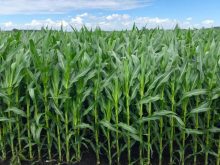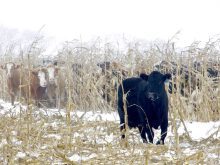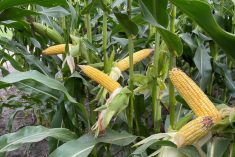Glacier FarmMedia — Corn seed is arguably one of a farmer’s greatest input investments each year, making the selection of the right hybrid mix an increasingly important task.
“The most yield potential a crop has is when the seed goes into the ground,” says Paul Sullivan, CCA with Sullivan Agro Inc. “After that, stresses like emergence, weather, nutrient availability and timing all pull back on the total genetic potential of the seed.”
READ ALSO: New corn hybrids for 2025
Read Also

Fendt takes a combine on the road in the U.S.
Putting an Ideal combine in fields across different regions has given the brand a chance to prove that the combine is capable of performing well in a variety of conditions.
Selecting the right hybrid with the most genetic potential to meet yield goals while managing local production stressors can be achieved, but Sullivan reminds farmers that they need to invest time in researching, discussing seed options and consulting advisors, such as seed representatives and agronomists.
Here are three considerations to help select the right hybrids for your farm:
Maximize ROI
Hybrid selection is one of the biggest determining factors when it comes to yield. And in many cases, yield is the greatest determining factor of a farmer’s return on investment (ROI).
“Selecting a hybrid that is appropriate for your farm and growing region is the first step,” says Ben Rosser, an Ontario Ministry of Agriculture, Food and Agribusiness (OMAFA) corn specialist. “Public and private corn trials are conducted across the province, so do your research, ask your neighbours about their experiences and your seed rep for the most local information on performance and yield.”
Not only should bushels be considered as part of economic potential, but other economic factors need to be considered too, such as drydown capabilities to decrease potential drying costs; seed cost; and pest or disease tolerance that can reduce quality and production performance.
“Hybrid maturity and end use markets also need to fit into the selection criteria, especially when it comes to managing risk tolerance for weather and field conditions,” says Rosser, who notes that soil conditions, planting and target harvest timing also need to be considered for each field when selecting the right maturity.
Marty Vermey, senior agronomist with Grain Farmers of Ontario, also points out that, since corn is driven by heat, selecting the appropriate heat units and relative maturity go hand-in-hand. “Maturity will differ across growing regions and between hybrids, so be sure to select appropriately for your farm,” he says.
Match your management style
“Every hybrid is different and requires a different management approach to maximize genetic potential,” Vermey says.
Knowing more about hybrid genetics allows farmers to take advantage of seed strengths and farm around the weaknesses. Management considerations such as population, planting window, soil type, fertility, crop protection products and harvest timing all need to be accounted for.
“Ask yourself what problems you want to solve through seed traits,” says Vermey, who recommends farmers make a list to help evaluate their risks and how their management approach will support selected hybrids.
Problems, or risks, can include weed control, insect pressures, standability, emergence issues, soil conditions, desired planting and harvesting windows, and nutrient concerns.
“Farmers need to match hybrids to overall management styles and equipment,” Vermey says. “Individual field conditions also need to be accounted for when it comes to aligning corn seed with crop management too.”
Trait resistance is something else farmers need to consider, especially in areas where corn rootworm resistance has emerged. Vermey reminds any farmers who are growing corn-on-corn follow OMAFA recommended management practices — and use trait technology wisely.
While resistance to European corn borer, for example, hasn’t been identified in Ontario yet, (though it has been confirmed in the Maritimes and Quebec), Vermey reminds farmers in that province to “monitor your fields diligently and be aware of any breakthrough insects you think you are controlling with traits.”
Ear flex can also be a consideration when researching corn hybrids. Sullivan explains that all hybrids will flex in at least one of three ways: ear girth, ear length and depth of kernel. Understanding the ear flex timing can also be factored into a management approach, especially when considering plant populations. For farmers using variable rate planting equipment and leveraging field nutrient based soil mapping systems, Sullivan recommends paying extra attention to ear flex and working with an adviser to select corn genetics to maximize crop potential.
Review and research
Hybrids can change quickly from year to year, but that’s no excuse not to take the time to learn more about them.
“Use all available resources when deciding hybrid selection and placement,” Rosser says.
Rosser reminds farmers of the importance of data when it comes to selecting the right corn hybrid, and the more data, the better. He recommends reviewing performance data over multiple growing seasons to get the best picture, and preferably data that has been collected across various growing conditions and environments.
“Look for hybrids with consistent performance across large data sets and multiple conditions,” Rosser says.
Vermey also recommends farmers talk to their neighbours to find out what works for them. “But understand your neighbour’s management – their time of planting, soil, nutrients and fungicide control – will be different from your own, so be sure to carefully research how a hybrid will perform on your own farm too,” he says.
Consulting one’s own trusted advisors, such as local seed representatives and agronomists, can also help farmers identify the strengths and weaknesses of hybrids being considered, Vermey says. And ideally, advisors should be local to help a farmer select the best fit for their growing region, heat units and disease and pest pressures.
“Don’t be afraid to try something new. Try adding one or two new hybrids every year to see how they work on your farm,” says Sullivan, who advises adding new hybrids in small increments, or on limited acres to reduce risk. He also recommends on-farm strip trials to measure performance and inform future hybrid selection.















